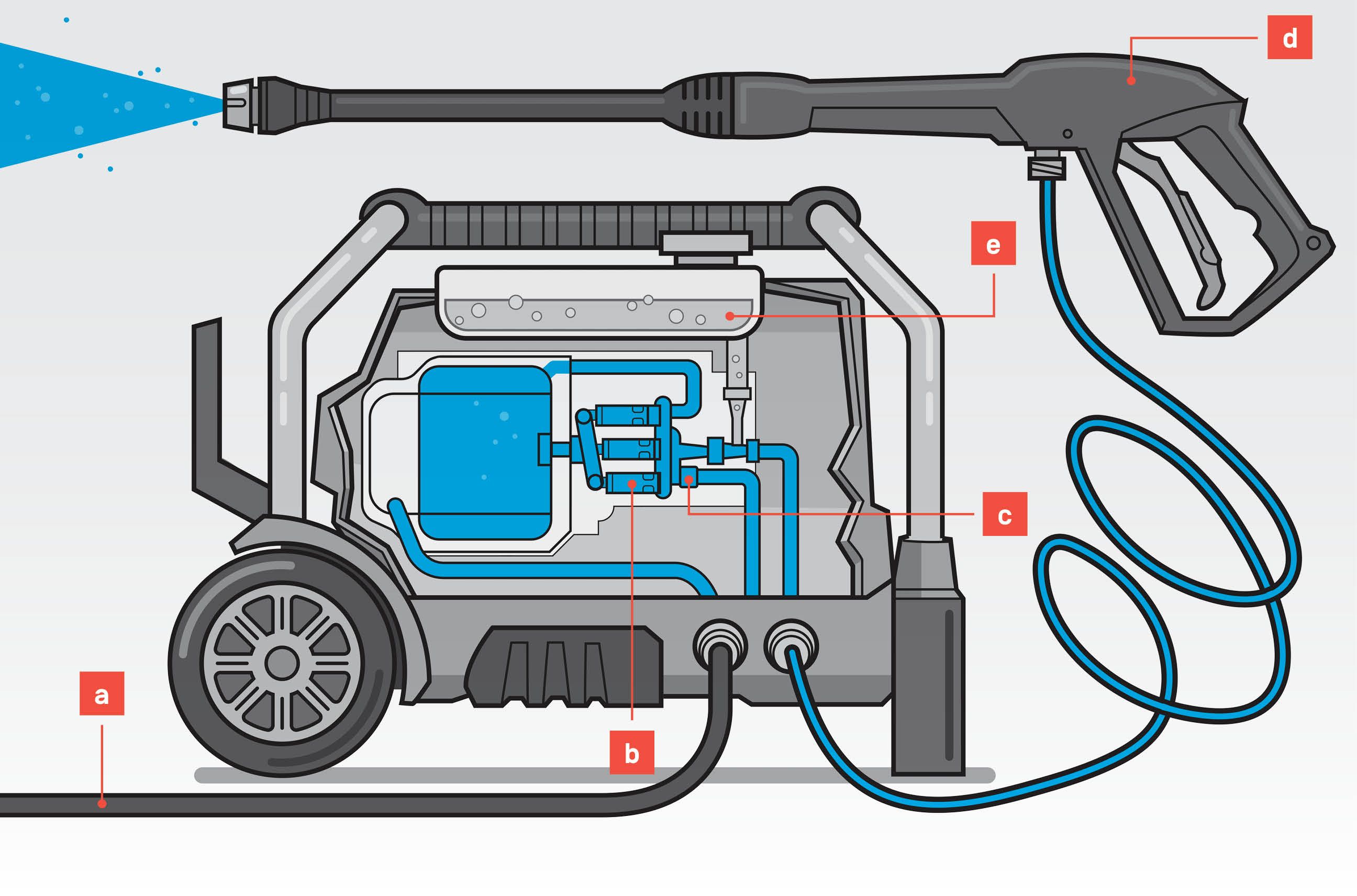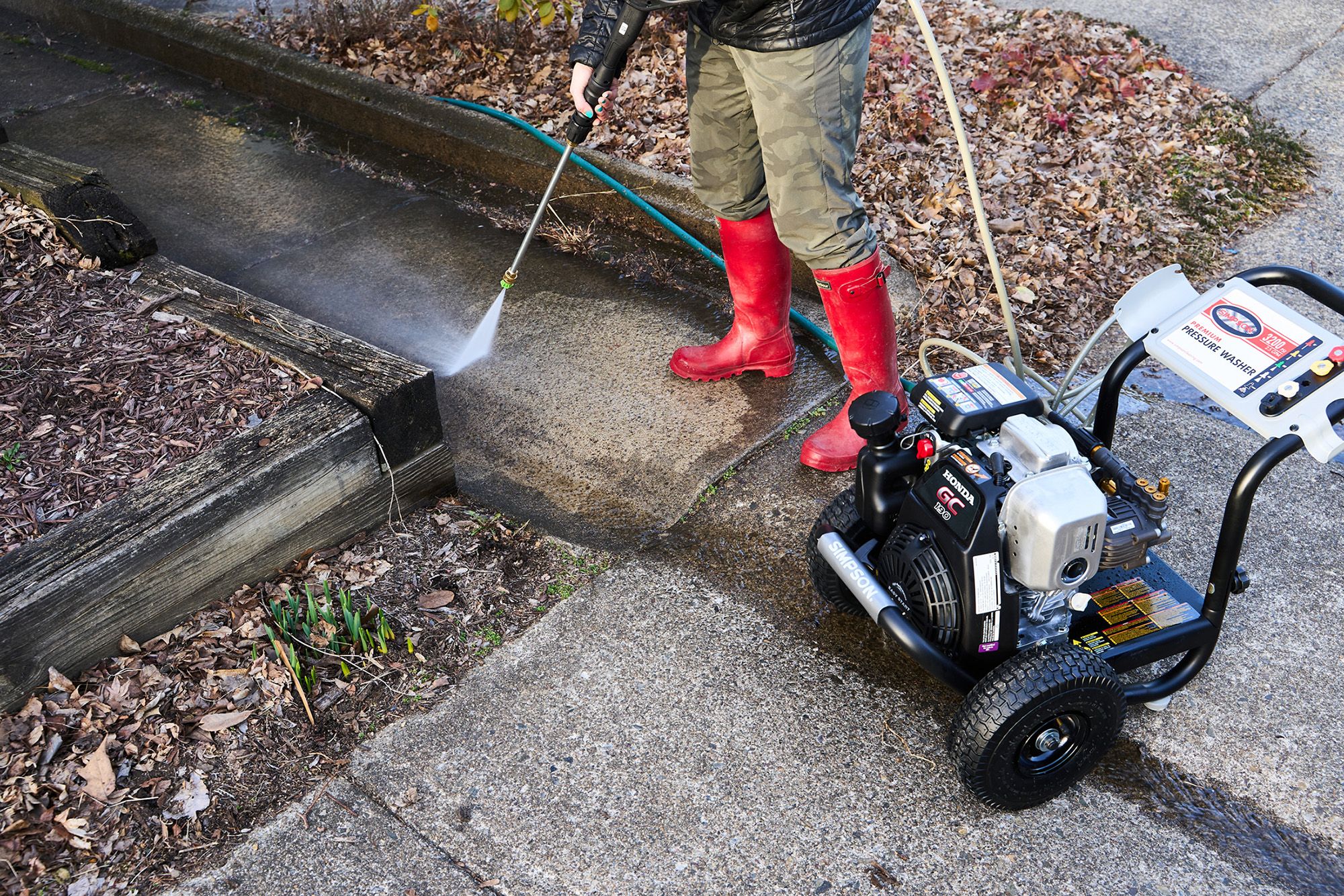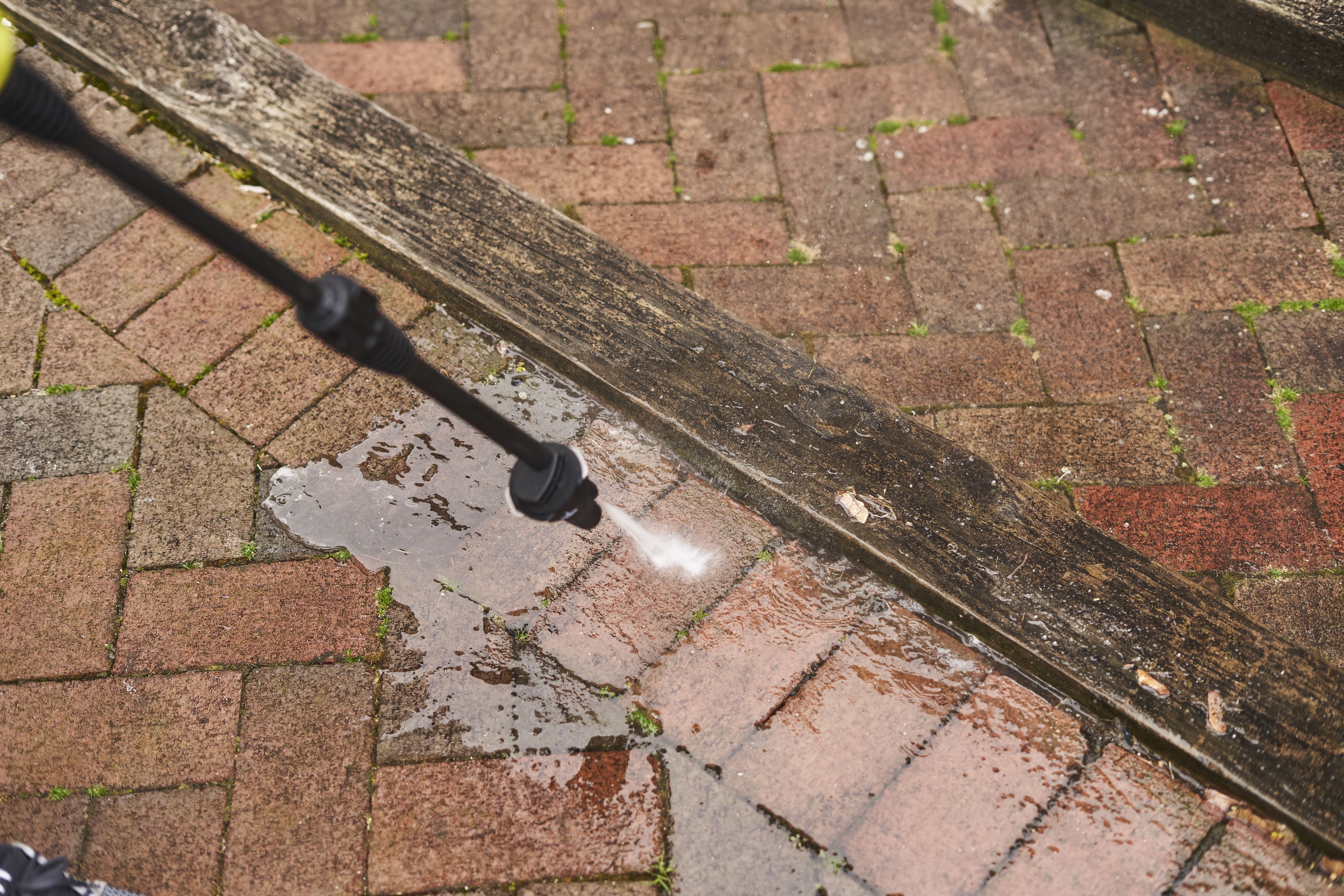
Staff, Courtesy of SIMPSON
Nothing gets outdoor surfaces clean the way a pressure washer does. It’s a one-two punch for dirty and grime. First, the machine siphons cleaner out of an onboard tank or a nearby bucket and applies it with a gentle spray. Then it blasts the surface clean with a high-pressure water jet that provides tremendous cleaning and rinsing power. In no time, dirt, pollen, mildew, bug nests, spider webs, and bird droppings are wiped right off. We tested more than a dozen pressure washers to find out which are the kings of clean.
The Best Pressure Washers of 2022
How a Pressure Washer Works
Water enters the pressure washer via a garden hose (a) and moves through a pump, which consists of a series of two or three plungers (b) arranged in a line or a circle. The plungers are powered by an output shaft on the engine or from a motor. Each plunger boosts the water pressure sequentially, one feeding higher pressure water to the plunger next in line. The last pulse of high-pressure water exits the pump. The water moves through a component called the unloader (c). This component unloads water if it gets too hot because the gun’s trigger is off. Next, the water travels down the hose to the gun (d). When you pull the gun’s trigger, you send a series of high-pressure pulses of water out the nozzle.
“It’s important to understand that the pump produces cleaning and rinsing efficiencies with high-velocity water pulsations,” says Vince Morabit, a mechanical engineer who’s designed and developed outdoor power equipment from pumps to chainsaws since the early 1960s. “Think of it this way: The kinetic energy in that pulse of water is like a chisel being struck repeatedly by a hammer.”
And since residential pressure washers also dispense cleaner, either out of a built-in tank (e) or by siphoning it out of a bucket, they clean via mechanical and chemical means. You apply the cleaner and then rinse the surface. The cycle is always the same: clean, rinse, repeat.
“The cleaning agent you use is as important as the pressure washer itself,” says Morabit. By selecting the right one, you rely less on the pressure washer’s force and more on the gentle removal of grime by the chemical action of the cleaner.

Selecting Gas or Electric
The pump that provides the high-velocity jet of water out of a pressure washer may be driven by a gas engine or an electric motor. One is not necessarily better than the other, but which you buy will depend on your cleaning needs, budget, and how you feel about maintaining the equipment you own.
Electric: These are best suited for brief cleaning sessions, running from 15 to 30 minutes. They have enough power for general washing of outdoor surfaces. They work well on wood and synthetic decks that need only gentle cleaning, all types of outdoor furniture, single-floor ranch houses, all types of exterior siding, and will clean the undercarriage of a pickup truck. They’re not well suited to heavy-duty cleaning or long sessions in the height of the summer. Their motor, cord, and ground-fault circuit interrupter (GFCI) can get extremely hot. These are much quieter than gas-engine pressure washers, and they need hardly any maintenance. As a bonus, they’re easy to store indoors during the winter.
Gas: These are best suited to heavy-duty cleaning. The power afforded by a gas engine can drive a large and powerful pump, enabling these machines to shoot water to higher surfaces, clean heavier deposits of mold and dirt, and even slice thick deposits of mud from equipment such as farm machinery, trucks, and off-road vehicles. A gas engine is much louder than an electric motor, plus requires maintenance in the form of oil changes, replacement air filters, and a yearly change of the spark plug. Not to mention you have to be careful about fuel degradation. Today’s alcohol-containing gasoline quickly degrades and can damage fuel-system parts like carburetors and gas lines. Also, these are best stored over the winter in the garage or an outbuilding.

A Word About Safety
All the machines we tested were safe to use, and we encountered nothing in them that caused us any concern. However, pressure washers by their nature demand careful and deliberate handling, both for your sake and that of whatever you’re cleaning.
Both electric and gas pressure washers can damage surfaces. Of the two, the risk is higher with gas-engine machines owing to the fact that they’re generally more powerful. There are some key things you need to know to clean safely and effectively.
- Use a green or a white nozzle for most jobs; their broad spray angle is less likely to damage surfaces. Reserve red and yellow nozzles only for the toughest cleaning. Their narrow spray angle provides more cutting action but is more likely to damage a surface.
- Avoid electricals. Don’t wash outdoor light fixtures, outlet receptacles covers, transformer boxes, doorbells, cameras, or backup generator cabinets. These objects are both easily damaged by high pressure water. Also, pressure washing them can, in the worst case, send water inside their electrical box, leading to a corrosion-induced electrical failure.
- Watch your distance, and keep moving. The longer you keep the pressure washer’s stream focused in one place, and the closer it is to the surface, the more likely you are to cause damage.
- Avoid or proceed with caution around delicate surfaces such a shade sails, insulated-glass windows, and outdoor furnishings built from soft materials like cedar or redwood.
How We Test
Testing pressure washers is the proverbial dirty job. We wash concrete and brick pavements, vinyl and cement board siding, aluminum trim and gutters, faux stone, vertical brick, and wood trim. Vinyl fences and outdoor furniture, too. We even very carefully washed some cars (using the white nozzle). One of the toughest tests was blasting clean three large commercial trash cans with bottoms awash in a nauseating soup of summer stink. They looked and smelled like new cans when we were done with them. Aside from cleaning ability, we look at ease of use. Would the washer tip over if you tugged on its hose? Just how easy is it to get the thing up a set of ramps and into the back of a pickup truck? Was the hose easy to tighten on to the pump fitting? And just how stiff is the hose that takes the water from the pump to the gun? Read on for our evaluations.
This content is created and maintained by a third party, and imported onto this page to help users provide their email addresses. You may be able to find more information about this and similar content at piano.io






More Stories
Get your garage ready for holiday prep!
Best Essential Holiday Decor – Maison de Pax
Insulation FAQ: What is Blanket Insulation